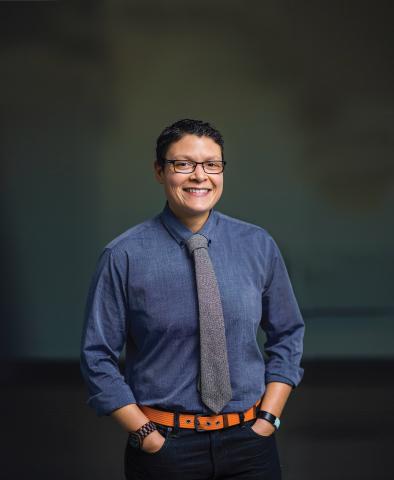Negotiating Gender in Medicine
Sociologist Coutinho-Sledge explores experiences of patients.
A new addition of the sociology department, Piper Coutinho-Sledge specializes in gender studies, the sociology of the body, and critical health studies. A confirmed academic, Coutinho-Sledge holds an M.S. in natural resources from the University of Vermont and an M.A. and Ph.D. in sociology from the University of Chicago.
The Wrong Body?
My research has looked at people navigating the medical system—specifically people who have “the wrong body” for particular kinds of medical care.
How do, or don’t, bodies and gender go together? And when you’re looking for care that presumes a particular kind of body and gender identity, how do you present?
Say, you go to the gynecologist. The gynecologist isn’t automatically thinking, Ah, the person in the exam room is a cisgender woman with this kind of body and these kinds of concerns. These thoughts aren’t at the forefront, but they shape the interaction.
So I started thinking about other situations where people’s identities and bodies might create some kind of trouble for a medical interaction.
What about transgender men seeking to access and then actually participate in preventive gynecological care? And what about people with cancers that affect body parts but don’t make sense medically? Cisgender men who have breast cancer and cisgender women who have been diagnosed with breast cancer and make the choice to have a bilateral mastectomy, who decide that this is what I want to do with their body even when it’s not medically necessary.
The Theory of Experience
I talked to people all over the country and a few abroad who got treatment here. I asked them to imagine they were writing a book—a novel or a memoir or a screenplay—about their experience with cancer and to start by describing that opening scene.
The idea was to find out about both the experience and their theory of the experience—that is, how they construct it. Then I develop my theory of everybody’s experience and put them all together.
The general story is that people participating in medical care have to rethink their identity and what their bodies mean, and they have to do so in a context shaped by certain ideas about gender—stereotypes and normative ideas. For example, those ideas influence whether doctors recommend surgery or not.
In some cases, the medical profession tries to help you manage. So, when cis-gender men get mammograms, the staff will say things like I’ll try to find you a gown that doesn’t have flowers on it. In effect, they’re saying, I understand you’re a man so I’m going to do these things that make you still feel like a man.
Whereas women who chose to have mastectomies but not reconstruction don’t often hear, Oh, I understand this. We’re going to help you. For those women, their social supports can help them make sense of their experience. They have people around them saying, I support you and love you, no matter what. We’re going to work through this. It doesn’t make it easy, but they have social supports that are helping them manage this. A lot of the people who chose reconstruction talk about I didn’t want to do this to my partner. Maybe if I weren’t married, I wouldn’t worry about reconstruction but I don’t want to upset this intimate partner. I don’t want to upset my kids. I don’t want to embarrass them at the beach.
Everybody is negotiating these issues in medicine, whether we know it or not. I’d say that they’re happening in other realms as well. Even if we’re not paying attention, we’re dealing with this same negotiation about our bodies and our identities.
Add Women and Stir
As a master’s student in Natural Resources at the University of Vermont, I worked with Cecilia Danks, who needed a grad student to do a feminist analysis of community-based forestry.
Within forestry, women are especially marginalized, and community-based forestry aims to bring in their voices and those of other marginalized populations. The idea is that, if you just bring them in, it’s all going to be better. But there’s more to gender than add women and stir.
What came of the analysis is an article in Gender, Work & Organization that looked at the trajectory of gender in these organizations. How can we use gender norms and stereotypes to change the gendered organization of an industry? My argument was, while standpoint theory tells us that bringing in different perspectives is useful, we need to take it a step further. We need to do more than bring in the women; we need to incorporate normatively feminine values.
Published on: 03/16/2017
